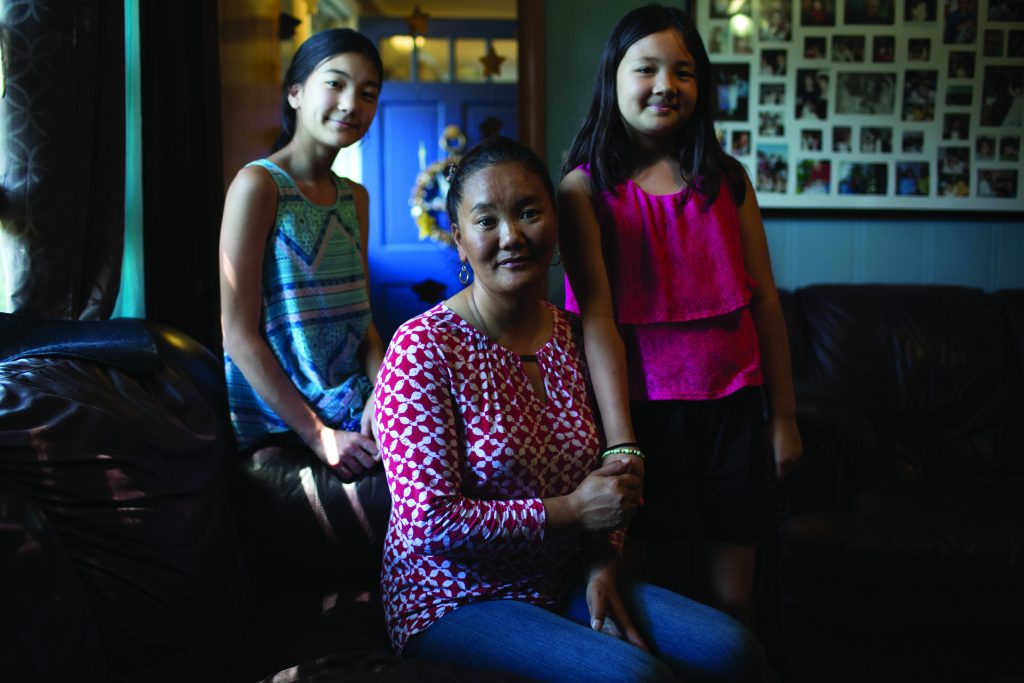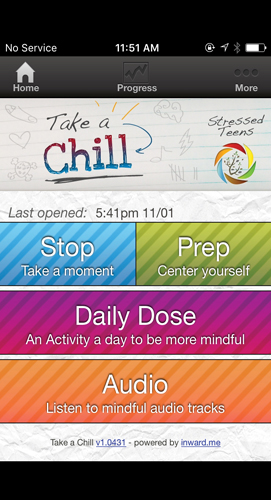![]()
Thirty years ago, the Village Zendo didn’t celebrate with a grand opening. The community started much more organically and modestly. For the first 14 years, the group met at Roshi Pat Enkyo O’Hara’s two-bedroom New York University faculty apartment in Manhattan’s Greenwich Village. Since then, the community has moved to the nearby Soho district and has grown to about 100 members, 80 of them formal students. Over 200 have taken their precept vows at the zendo.
“For our 30th anniversary celebration, a few students put together a slide show that brought back so many memories. Because, you know, this is New York City and lots of people have practiced with us and now live everywhere in the world,” recalled Enkyo Roshi, the Village Zendo’s abbot. “And there are quite a few people who started practicing with us 30 years ago and are still practicing with us. And quite a few who came 15 years ago, or 10 years ago. That’s kind of unique in the sense that if this is your flavor, this is a place you can stay.”
Tricycle’s web editor, Wendy Joan Biddlecombe, recently sat down with Enkyo Roshi to talk about the last three decades and how the sangha has come to define itself.
The Village Zendo has been in its current location for about 10 years. How has your walk here every morning changed? How has the neighborhood changed?
Soho used to be a place for artists and musicians, and now many people are being priced out. It’s changed, and we have to recognize this change is happening. If you’re constantly resisting, it puts a wrong feel to your life. Sometimes there are great things: this building [next door] has a lot of dot coms, a lot of young people. But we may be priced out, we don’t know, so it’s kind of scary to be in a high-rent district. Location is so important for people to be able to practice. Here we have all these subway [lines], so it’s easy to come from Brooklyn, from New Jersey, from uptown on both sides. So I would hate to have to move somewhere that would isolate the community.
![Village Zendo]()
What are some great opportunities to practice in the city?
Just walking down the street and observing how one is in relation to the other people walking on the street. Are you with the stream or against the stream of people? Can you open your heart to those who are bumping into you? Can you just notice that they’re like beautiful flowers flowing down the street (if you’re having a bad day, not so much!). And to recognize those changes in the mind. How our minds are set is the heart of Zen and all Buddhist teachings; it’s not so much about what is out there. And when you’re in a place where there is so much change, the practice really balances you. It’s amazing.
Of course, living in a city is challenging. Traditionally, we think of Zen as a monastic form, but I really like what has happened to us—it hasn’t been conscious, but the urban environment has necessitated that we develop a flexibility in order to maintain a community. We’re clear about using ritual in an appropriate way, not in a crazy way or in a way that moves against the flow of life here in the city. So though I’ve been ordained, and we have some ordained priests, our practice at the Village Zendo is primarily a lay expression of the dharma. And even all of us priests essentially live lay lives—we don’t live together, we all have separate apartments, and some of us are married. There is a tension to some of the ritual aspects that draws a certain kind of person to the dharma. Not everyone is interested in bowing at your cushion and bowing at the community.
What are some of the things, then, you wouldn’t find at the Village Zendo?
Traditionally, we say don’t move, sit quietly. When many people first begin to practice any kind of meditation, they suddenly become very twitchy, because when you have a thought that you don’t like, it’s easier to reach up and scratch your ear than to stay with that moment. So there’s a powerful teaching in don’t move. But if someone is in pain, they should move. I have been trained in certain places where that wasn’t allowable. Here, there is an awareness that many people are new to the practice, and it’s going to take them time to adjust to the form.
We used to have 45-minute meditation periods, and we now have 30-minute ones. That’s a doable amount of time for most people. I think that’s a big change—many Zen centers still hold the 40- and 50-minute meditation periods. And we’ve cut back on the services. With the time that people have to come and to practice—say two hours in an evening—I think it’s more important for them to sit in meditation and be able to see a teacher privately than it is to be standing and chanting some words that they perhaps don’t understand. We’ve cut back, though we still do liturgy on retreat, and we’ll use chants that are translated into English. So it’s less old-school liturgy. Once a month we’ll do atonement ceremonies with a lot of bows, and that’s always fun—there are people who like that and the place is always full. And there are people who don’t like that, and don’t have to come to that if they don’t want to.
A huge thing about Zen is finding your practice in your life, finding practice in the work you do, and appreciating the work you do. So when you’re emptying the garbage and when you’re shopping to prepare for a dinner, to take the mind of zazen, the mind of meditation, into those acts. To take that energy of awareness, precision, and appreciation into what you’re doing is very cool.
Can you take me through the three decades of the Village Zendo and tell me the highlights that come to mind?
During the first 10 years I was still teaching at NYU, and I began the practice not as a teacher but as a dharma student who wasn’t very disciplined and wanted community around me. I thought well, you invite people over . . . what are you going to do, you’re going to practice, right? I’d say the first 10 years was about establishing the early community and sharing all of the aspects of building community together. That was during the time of the AIDS crisis. We had several members who had AIDS, who died of AIDS, and we had a sangha at the Gay Men’s Health Crisis, so that first 10 years is also very colored by mourning, and sadness, and awareness of the preciousness of life that maybe we wouldn’t have had if we hadn’t had those sitting next to us who were sick and dying. It was a very scary time. We probably had more gay people in our community then than we do now because there was so much less acceptance [in society]. It wasn’t a gay sangha, there were many people in it who weren’t gay, but there was a sense that gay people were welcomed here. And during that time everyone was pretty new to Zen practice. I was studying intensely with Maezumi Roshi in California. I took a sabbatical year from the university to study with him, and I went every summer. So I was becoming the de facto teacher before I was actually a teacher. I did not consider myself a teacher, I considered myself a leader of a community. But then Maezumi Roshi pushed me to take more of a teacher role, and when he died I began working with Bernie Glassman. I had never studied with Bernie because I thought, well, I’m a political activist already, I know how to do that. But I didn’t.
I learned a lot from Bernie about the integration of our Zen principles in social action, and I would say the second 10 years were a lot about integrating social action—street retreats, Auschwitz retreats—at a time when it was really needed. There was so much anger around 9/11 and a need for people to stand up and show some compassion and awareness. We did a lot of that work, and at the same time maintained ordinary, day-to-day meditation. To me, that’s the success of this place, the morning, noon, and evening sits that never cease. And during the second decade some of my colleagues were beginning to mature and become able to dedicate their time to teaching. Now, in the third 10 years, those teachers are excellent veteran teachers. I have two therapists, a professor from NYU, and a potter. And coming along I’ll have a deaf man who is an art therapist, a jazz musician, and a Unitarian minister—those three are our junior teachers now. So I’m not concerned if I decide to take a vacation and go and live on an island somewhere that this will stop. It will continue.
If we’re talking again in 10 years, what would you like to be saying about the Village Zendo?
That we have a place that is large enough to accommodate all the people who want to come and to be able to continue to offer the dharma, both with new teachers and younger teachers. The “marketplace dharma” that’s going on now has its good aspects and its scary aspects. One good thing is that more young people are coming. Zazen centers can be a bit geriatric, but now we certainly have young people here. That’s a benefit.
We’re in the midst of a lot of political fear and uncertainty. Where can a dharma center fit in?
This is definitely a place to come and settle and prioritize and understand that while you can’t do everything, you can mobilize in a particular area. We’re big on disability rights here, and we also have a strong prison program. We have a group that goes to Sing Sing every weekend and sits and has dharma talks there. We had our first precepts ceremony there recently. We also have a group that writes letters to prisoners in solitary confinement all over the country, and they also write letters to Congress and so forth to put pressure around prison reform.
What distinguishes our group is a strong political action component. Everybody comes to dharma because they’re suffering. We all have different personal things, but we start to practice because we want to be free, we want to be clear, we want to conduct our lives in a good way. Once we begin on that path and we have a community that supports us, we can begin to make a difference. And I think that’s what distinguishes us from some places that might be more interested in a theoretical understanding of the dharma.
The post The Village Zendo Celebrates 30 Years as a Community appeared first on Tricycle.




































